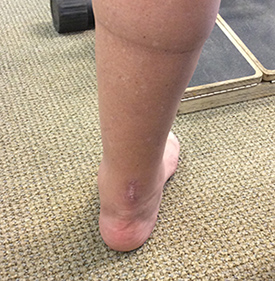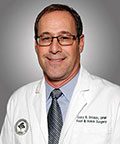- Home
- Advanced Treatments
- PARS for Achilles Rupture
Percutaneous Achilles Repair System (PARS)
- Published 6/1/2018
- Last Reviewed 2/8/2024
The Achilles, a thick tendon in the back of your ankle, connects the calf muscles to your heel bone. Often medically referred to as the calcaneal tendon, the Achilles is essential for running, walking, jumping, and any form of movement in which you must push off from the ground.
An Achilles tendon injury can greatly impair movement, and the most severe injuries, such as a torn tendon, can necessitate surgery.
If non-surgical treatment is not an option, and you require Achilles tendon surgery, you may want to consider the PARS procedure.
- What is the PARS procedure for Achilles rupture repair?
- What are the benefits of the PARS procedure?
- How does PARS compare to traditional "open repair" surgery?
- UFAI PARS Yelp Patient Review, in her own words...
- Why choose the minimally invasive PARS surgery?
- What to expect during recovery for Achilles surgery
- Why UFAI is your best choice for Achilles tendon treatment
- Achilles tendon surgery FAQs
- How are Achilles tendon tears diagnosed?
- Can tendon surgery cause nerve damage?
- Can acute Achilles tendon rupture (ATR) cause a blood clot?
-
ABFAS® Board Certified in Foot and Ankle Surgery and Co-Director of University Foot and Ankle Institute
Board-Certified Podiatric Foot and Ankle Specialist, Dr. Gary Briskin, DPM, FACFAS, began his medical training by serving a residency at Flint General Hospital in Michigan. Once completed, he established a practice in Century City Hospital, where he soon became chief of podiatric surgery.
Dr. Briskin is a Diplomat of the American Board of Podiatric Surgery and a Fellow of the American College of Foot and Ankle Surgeons. He also serves as an assistant clinical professor at the UCLA School of Medicine and is co-founder and co-director of University Foot and Ankle Institute.
Achilles Tendon Articles from Our Blog
- An Inside Look at Shockwave Therapy for Heel Pain, now available in Valencia, CA
- Avoiding Foot and Ankle Overuse Injuries While Dog Walking
- How Carrying Extra Weight Affects Your Feet and Ankles
- What's Plantar Tendonitis and Why is it Still a "Medical Mystery"?
- Got Plantar Fasciitis or Achilles Tendonitis? Could PRP, Amniox Stem Cells or Cortisone Answer Your Pain Relief Prayers?
- Your Lower Back Pain May Be Caused By How You Walk
- Common Prescriptions and OTC Medications That Affect Your Feet and Certain Foot and Ankle Conditions
- Achilles Tendinitis Treatment Do’s and Don’ts
- Beat the 6 Most Common Walking Pains
 This procedure could be embarrassing and painful. Instead, the doctor is friendly and extremely competent, my feet look and fe...Ronnie K.
This procedure could be embarrassing and painful. Instead, the doctor is friendly and extremely competent, my feet look and fe...Ronnie K. I have been treated by Dr. Jafari for a little over a year now and he is absolutely the best! He really listens, he cares, and...Debbie B.
I have been treated by Dr. Jafari for a little over a year now and he is absolutely the best! He really listens, he cares, and...Debbie B. Please provide handicap parkingBarry S.
Please provide handicap parkingBarry S. Dr. Ambibola Johnson is awesome!Laurie S.
Dr. Ambibola Johnson is awesome!Laurie S. I appreciate the care and timeliness of all my appointments I’ve had at UFAI. Gray, Lydia and the staff all are wonderful. Lydi...Edelmira G.
I appreciate the care and timeliness of all my appointments I’ve had at UFAI. Gray, Lydia and the staff all are wonderful. Lydi...Edelmira G. Very greatfull for the doctor and stuffJesus M.
Very greatfull for the doctor and stuffJesus M. Doctor was very caringBrigitte S.
Doctor was very caringBrigitte S. Everyone is very nice and efficient-
Everyone is very nice and efficient-
Especially Dr Kelman. He takes very good care of me!!Claudia K. Great costumer service.
Great costumer service.
Prompt and efficientDean W. Great podiatrist and office staff as well. Loved that they had an appt within the week, took X-rays right in the office before ...Sunny S.
Great podiatrist and office staff as well. Loved that they had an appt within the week, took X-rays right in the office before ...Sunny S. No . I’m pleased with the care .Michael P.
No . I’m pleased with the care .Michael P. Appreciate the professionalism and expertise, as well as the caring.Stella G.
Appreciate the professionalism and expertise, as well as the caring.Stella G.
-
 Listen Now
Beat the 6 Most Common Walking Pains
Read More
Listen Now
Beat the 6 Most Common Walking Pains
Read More
-
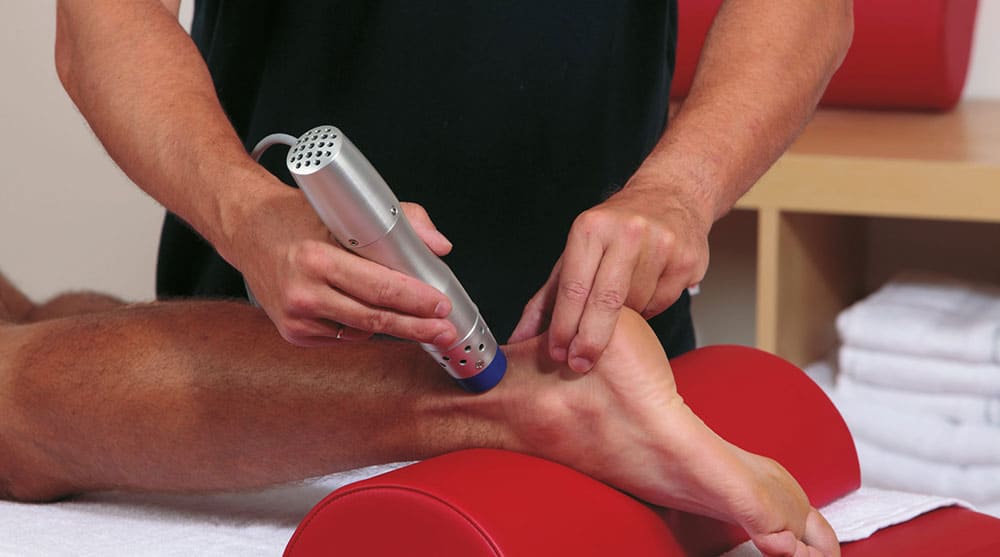 Listen Now
An Inside Look at Shockwave Therapy for Heel Pain, now available in Valencia, CA
Read More
Listen Now
An Inside Look at Shockwave Therapy for Heel Pain, now available in Valencia, CA
Read More
-
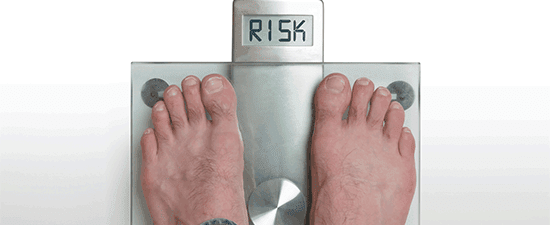 Listen Now
How Carrying Extra Weight Affects Your Feet and Ankles
Read More
Listen Now
How Carrying Extra Weight Affects Your Feet and Ankles
Read More
-
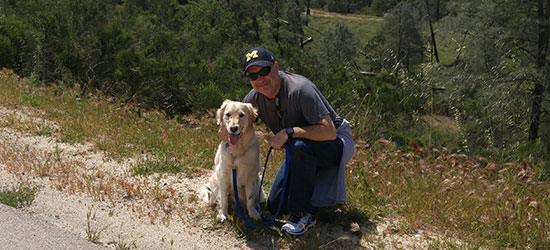 Listen Now
Avoiding Foot and Ankle Overuse Injuries While Dog Walking
Read More
Listen Now
Avoiding Foot and Ankle Overuse Injuries While Dog Walking
Read More
-
 Listen Now
Common Prescriptions and OTC Medications That Affect Your Feet and Certain Foot and Ankle Conditions
Read More
Listen Now
Common Prescriptions and OTC Medications That Affect Your Feet and Certain Foot and Ankle Conditions
Read More
-
 Listen Now
Your Lower Back Pain May Be Caused By How You Walk
Read More
Listen Now
Your Lower Back Pain May Be Caused By How You Walk
Read More
-
 Listen Now
What's Plantar Tendonitis and Why is it Still a "Medical Mystery"?
Read More
Listen Now
What's Plantar Tendonitis and Why is it Still a "Medical Mystery"?
Read More
-
 Got Plantar Fasciitis or Achilles Tendonitis? Could PRP, Amniox Stem Cells or Cortisone Answer Your Pain Relief Prayers?
Read More
Got Plantar Fasciitis or Achilles Tendonitis? Could PRP, Amniox Stem Cells or Cortisone Answer Your Pain Relief Prayers?
Read More
-
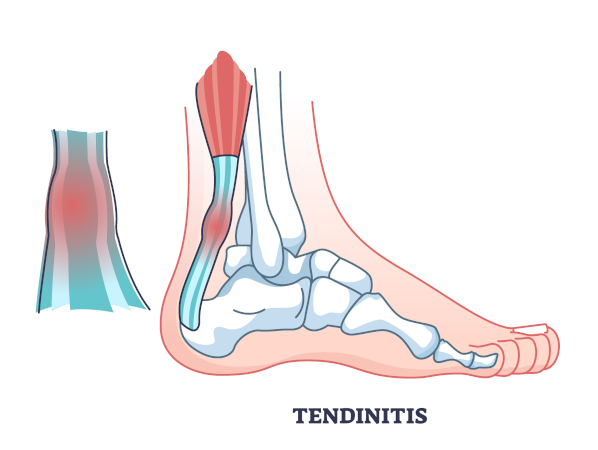 Achilles Tendinitis Treatment Do’s and Don’ts
Read More
Achilles Tendinitis Treatment Do’s and Don’ts
Read More

